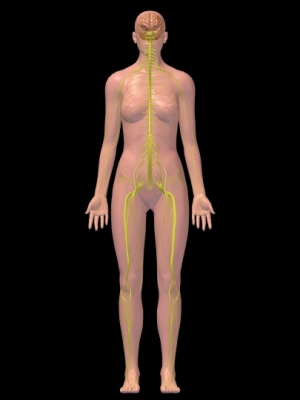Agorafoʙija
Description agoraphobia
Agorafoʙija – an irrational fear of being in a place or situation, find a way out of which are difficult or impossible. People with agoraphobia often go out of the house. Often associated agoraphobia with panic disorder. In this case, the victims are afraid, that will be helpless if a panic attack.

Reasons agoraphobia
The exact cause is unknown. Most cases of agoraphobia develops after anxiety attacks. He who fears the emergence of yet another attack, agoraphobic avoids places and situations, that cause seizures. Factors, which may contribute to the development of this phobia, include:
- Genetic changes;
- Chemical changes in brain activity;
- Increased nervousness, Even in normal situations;
- Overvaluation and concern about physical changes (such as increased heart rate);
- Distorted thinking, which can cause fear.
Risk factors for agoraphobia
Factors, which increase the likelihood of developing agoraphobia:
- Tendency to nervousness or anxiety;
- Stressful situations;
- The presence of family members with panic disorder or phobias;
- Age: 18-35;
- Paul: female;
- Mental disorders;
- Personality disorder.
The symptoms of agoraphobia
- The fear of being in a crowd, store, queue, or be in a similar situation;
- Fear of riding in a car, bus or train;
- Creating a safe zone around them;
- Anxiety, when you are outside the safe zone;
- Fear of being alone;
- Avoiding situations, which can lead to panic;
- Limitation of activities outside the home;
- The feeling of greater security with a true friend;
- Lack of interest in daily activities.
Agoraphobia is commonly associated with the following disorders:
- Picks;
- Depression;
- Eating Disorders (anorexia, Bulimia);
- Substance abuse.
Fear can cause a panic attack. Attacks start quickly and peak in about 10 minutes. Panic attack usually includes four or more symptom:
- Intense fear;
- Uncertainty;
- Cardiopalmus;
- Heightened sensation in the chest;
- Sweating;
- Redness of the face or body;
- Breathlessness;
- Chest pain;
- Dizziness;
- The feeling of heat or chill;
- Numbness or tingling;
- Nausea;
- The feeling of losing control or madness;
- Fear of heart attack and death.
Diagnosis agoraphobia
The doctor performs a physical examination, and can also search for the disease, drugs or other substances, which may be the cause of the symptoms.
He can ask the following questions:
- On the use of alcohol and drugs by the patient;
- About Mental Health;
- On the mental health of family members.
There is no specific test for accurate diagnosis of agoraphobia or panic disorder. Nonetheless, perhaps, you must undergo an examination of the heart or blood tests, to find the cause.
Treatment of agoraphobia
Treatment aims to help overcome irrational fears and live more independently. The goals of treatment:
- Reducing the number and severity of panic attacks;
- Education panic attacks treatment, that sometimes occur.
Treatment may include
Cognitive therapy povedencheskaya
This therapy combines:
- Cognitive therapy, to change the way of thinking;
- Behavioral therapy, to help patients change their behavior.
Therapy helps to learn:
- Identify and change anxious thoughts;
- Use relaxation techniques, to decrease feelings of anxiety;
- Breath control, make it deeper;
- Cope with physical changes, associated with anxiety;
- Confront situations, causing fear.
Medication
Commonly used drugs include:
- Antidepressants;
- Benzodiazepines or other anti-anxiety drugs. Benzodiazepines may cause dependence. It means, that the appearance of withdrawal symptoms, treatment should be stopped.
Lifestyle changes
You should avoid caffeine and nicotine. They can increase anxiety.
Prevention of agoraphobia
Agoraphobia often develops as a response to panic attacks. Instead of, Places to avoid, where there was a panic attack, better to seek medical or psychological help. Early treatment for panic attacks can help prevent agoraphobia.
